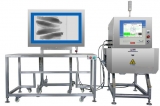
J-Magnetics-A reliable magnetic separation equipment solution provider!
Product Center
New Products
News Center
Contact Us

Contact :Joshua Shen
Email: joshua@j-magnetics.com
Add: Yueyang Tower District, Yueyang City, Hunan Province, China.
















